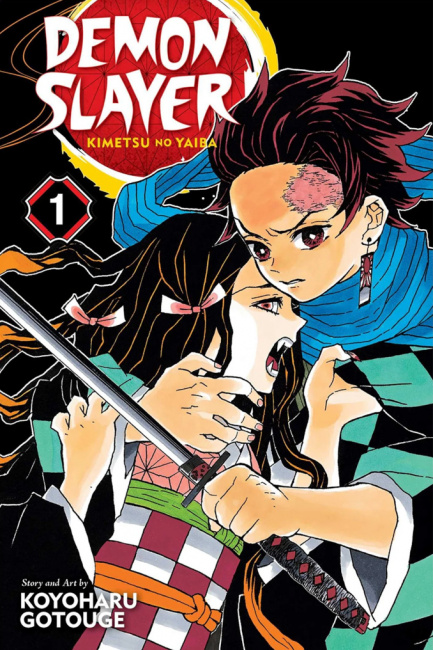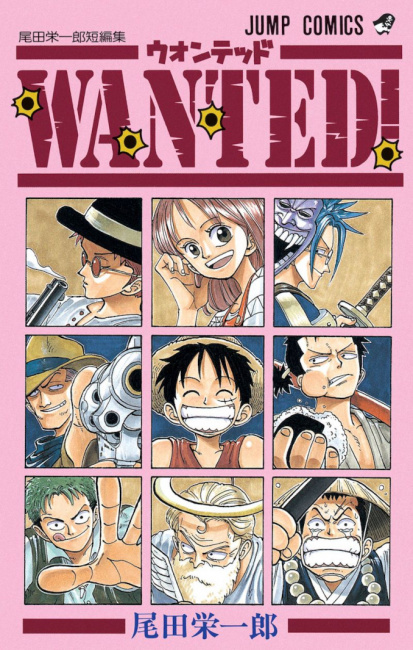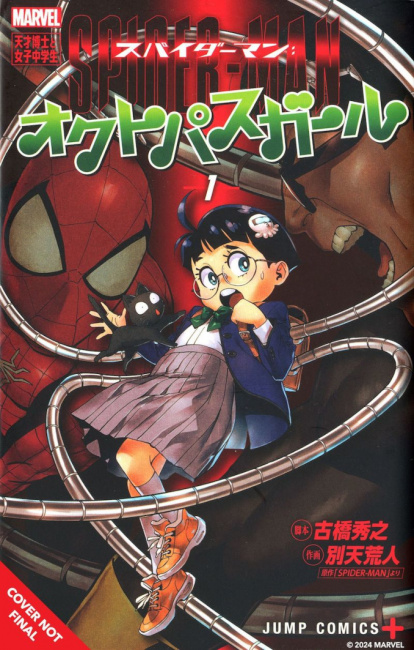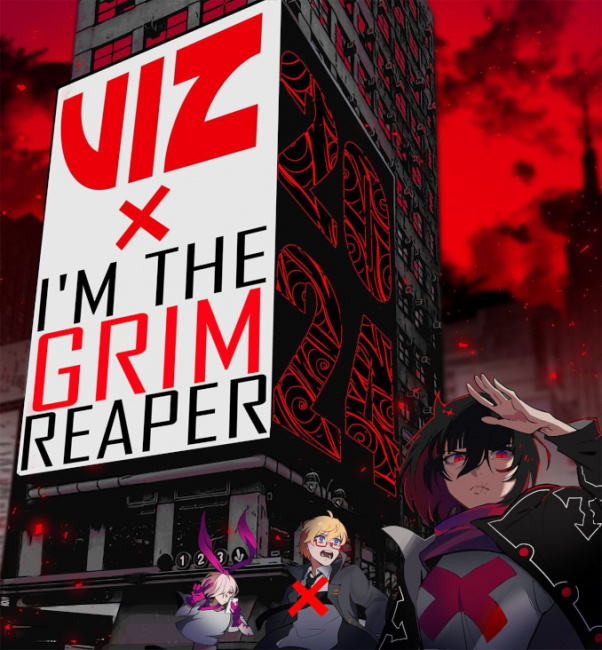We sat down with VIZ Media Vice-President Publishing for our annual Manga Week interview, and got an update on the manga market, what’s going on with anime and digital, and the top VIZ releases for Fall 2024.
ICv2: The last time we talked was at San Diego Comic‑Con last year (see “Hamric on Post-Covid Manga Trends“). How would you describe the overall manga market since then?
Kevin Hamric: Very steady. I wouldn’t say there’s been much of a change at all since the last time we spoke.
It was down 23 percent at the time. BookScan said about that percentage for last year in the book channel, right?
The category ended at 28 percent down.
Were there any changes in what was selling, or was it just across the board, which is the phenomenon you were describing last summer?
It is across the board. Obviously, shonen, boys action adventure, is still number one by far. Anime tie‑ins, horror, even yaoi is still selling very well. Not much of a change at all.
How much is manga up over pre-Covid sales, though?
We’re over 2020.
Were 2020 sales less than 2019, or was that when manga sales were already starting to go crazy?
It was when that all was starting to go crazy.
Some of those new customers are sticking?
Yeah, and very much so, as we can tell by the volume of sales for volumes two, three, four, five, six, ongoing series. The other thing that’s still interesting is the quantity of volume ones that we’re still selling.
That’s still an indication that we’re getting new readers into a series, and those readers either have been reading manga, or are fairly new to manga. Or, it’s new people to the category altogether.
The number one manga last year Demon Slayer Vol. 1 (see “Full Year 2023 Top 20 Manga“), which is crazy because that’s been around for a little while.
[laughs] Yeah, Demon Slayer and Jujutsu Kaisen seem to keep on going. It was a phenomenon of a story. Again, we’re just getting new eyeballs to series that are, at this point, pretty deep backlist.
Did you see any differences by channel last year? You’ve got book channel/online, you’ve got Direct Market, you’ve got mass. Any differences between channels in terms of how manga has been performing?
Not much of a change. There’s only one of them that came down, and that would be mass merchandisers. That’s just a decision on their part to shrink the category a little bit. Still very strong sales.
Everybody else is still showing very strong results. Like you said, it’s the book chains, book trade, online, library is very strong, wholesale. Even digital is still strong.
You said that mass merchants had cut back on manga. Are you saying that the number of titles that they’re offering is down? From our store visits, they definitely had manga, but maybe not as many as before.
The mass merchandisers try to take advantage of every opportunity that comes along and try to be nimble, and they both made a decision to put a little bit more focus on this new up‑and‑coming romantasy‑type category that’s a combination of science fiction, fantasy, and romance, titles that have been coming out, especially in the YA category.
They devoted a little bit more space to that and pulled back a little bit on manga and graphic novels, I’m finding.
Direct Market?
The Direct Market took a little bit of a hit last year. That’s not unlike in the overall category in the book trade. Looking at what was sold, which always is a little bit different than the book trade, it’s still showing strong numbers for the more literary‑type things, our VIZ Signature imprint, as well as all the Shonen Jump stuff.
We’ve talked in the past about how comic stores have a challenge in terms of knowing what to order. Are you seeing more comic stores buying from Simon & Schuster so they can get returns and maybe take a few more risks?
Maybe not totally moving over to them, but at least give them another outlet, a place to order books, and get different types of terms for their stores, whether it’s returnable or better non‑returnable terms than a distributer within the Direct Market gives. There are better online tools by going to a Big Five publisher than the typical Direct Market distributors have available.
Last summer, you were saying that people weren’t streaming anime as much. Is that a continuing post‑COVID trend, that there are fewer hours being watched of anime these days?
Still very high, still stronger than pre‑COVID, just like manga sales are stronger than pre‑COVID, but not as strong as it was during COVID, obviously, because people are out and about and leaving their houses and spending discretionary income in different ways.
The big anime‑producing streaming houses are still devoting a ton of dollars to either buying or developing anime, but the viewing hours have come down.
Over the last couple of years, from BookScan it certainly seemed like theatrical releases, like One Piece and Demon Slayer a couple of years ago boosted those titles. Last year, there were a couple of theatrical events around repackaged episodes of Demon Slayer. When anime hits theaters, does that bring in a new, different audience than streaming?
I believe it is. Even with the live‑action One Piece series on Netflix, we think that’s brought in a different audience type as well. Definitely, the movies. When One Piece Red hit the theaters, and My Hero Academia and Demon Slayer hit the theaters, it broadens the audience. You get new eyeballs, you get a better cross-section of demographics, across people going to see what this is all about. Then, they start looking into the books, and they start looking into the merch. It’s just a chain reaction.
What’s the relationship between digital and print. You’ve got subscription digital, which is doing new chapters of material that hasn’t been released here. You have download‑to‑own options. What’s the interaction like — do you think people read the chapters online, and then go out and buy the books when they come out, or is it different people, or is it just an indication of what would do well in print? What’s the interaction between what’s doing well in digital and what happens in print?
It’s all of the above. [laughs] We’ve got fans that will read the free chapters, pre‑paywall, and then pay on a per‑chapter basis, or will become members and open up the vault to get access to everything. There are people who just do that, then we’ve got the people who read on our subscription services, and then either go out and buy those, the hard copy or the digital copy. Sometimes, people do all three.
There doesn’t seem to be any cannibalization whatsoever. In fact, we think it’s actually helped sales.
To your last point, yes, this does give us some type of an indication when we place things on the subscription service as to whether or not we should bring them over and put them into print copies.
Given the big drop‑off last year, this year should have much easier comps. Do you think manga can achieve growth this year?
I think we’re going to be probably flat to actual growth from ’23, which is not a bad thing. It’s not a good thing. I don’t think we’re going to see a drop this year, but I don’t think we’re going to see much, if any, growth this year for a variety of reasons: the way that people feel about the economy versus the way it actually is; also, just the fact that I still think we’re on this post‑COVID high of people being out and about and doing different things.
It’s now the publishers’ job to keep those people that were brought in during COVID, keep them active, and keep them interested in manga. The onus is on us as the publishers.
VIZ made a large group of announcements for 2024 recently, which ICv2 covered (see “VIZ Announcements“). Can you give us some color on some of the big releases for VIZ that are coming up this year?
What we just announced was a very jam‑packed list for Fall ’24, including things like Wanted! Eiichiro Oda Before One Piece. This was a collection of Oda’s earliest works, including the pilot chapter for One Piece. This is a standalone one‑shot, never published as a single book here in the U.S. or in English. We’ve been doing these pre‑manga from before a manga-ka became very famous, and this is one we’re continuing with. Again, this includes the “Romance Dawn” chapter, which is the introduction of Luffy.
We’re bringing back Red River in our 3‑in‑1 Omnibus Edition. This is the classic romance fantasy series about a modern girl who’s lifted to ancient times and has to navigate the warring factions to find her way home. This was very popular back in the day. We have not sent something to be reprinted in several years now; we’re going to repackage it our 3‑in‑1 Omnibus Edition.
One of the box sets we’ve got coming out (we always do two box sets in the Fall), will be Vampire Knight Complete Box Set. We’ve done this in the past with two separate Vampire Night box sets, but this is going to be all‑encompassing, volumes 1 through 19. It will also include a planner and an exclusive art book.
Quick question on that. You mentioned a little trepidation about the economy. Is that hurting super high‑end stuff like the big box sets?
No. Actually, our box sets are still continuing to sell very well. This is still a little bit of the repercussions from COVID when we were not able to make them or print them. We are selling box sets like crazy still. It’s something that VIZ started many, many years ago, and we’re going to continue as long as we can. We keep reprinting things. We’ve got numbers today from Amazon for the Demon Slayer Box Set, and they just ordered a bunch more.
Continuing with the Fall ’24 list, we’ve got Spider‑Man: Octo‑Girl. This is a new Spider‑Man manga from the creators of My Hero Academia: Vigilantes. Spider‑Man rogue Doctor Octopus faces his biggest challenge yet, living life as a middle school girl in Japan.
This is a continuation of our books from a joint venture in Japan from one of our parent companies, Shueisha, and Marvel.
Didn’t we see an X‑Men title, too?
What we’re doing with X‑Men is a deluxe manga with the X‑Men stories from 1992 that we’re repackaging and bringing back out. This is the manga version of the X‑Men stories.
That’s something VIZ did in the 90s that you’re reprinting?
No, this was done in Japan. It was never done in English. This is the complete translation of the unfinished Marvel comic series. It’s just two volumes long, but it’s never been repackaged in English.
The second box set is The Legend of Zelda: Twilight Princess” Complete Box Set. This is pulling together all 11 manga volumes into one box set.
The one that I’m very pleased about is, we’re adapting a WEBTOON original series called I’m the Grim Reaper. This is very dark, very well‑done. It’s a dark battle horror manga series that mixes action, adventure, and moral conflicts with fights with the devil himself.
In English, it’s got 1.8 million followers, and in Spanish, it’s got 1.3 million followers. It’s a huge, huge following across social media, different platforms. The creator, whose name is Graveweaver, has a huge, huge following as well.
Then, we’ve got our Junji Ito book, which is called Uncanny: The Origins of Fear. This is a little bit different. This is more of a autobiography horror manga analysis by Junji Ito. It’s not a manga released by him. It’s full of never‑before‑told insider anecdotes and behind‑the‑scenes stories that he’s experienced throughout his career.
And those are the big boys.
Anything else we should be looking at in the manga biz?
Just keep an eye on the overall all business itself. Manga still is (I forget how many years in a row now this is) the largest part of the graphic novel category. We don’t see that changing any time in the near future. Business is still strong, and people are very voracious to get good content.
Source: ICV2












